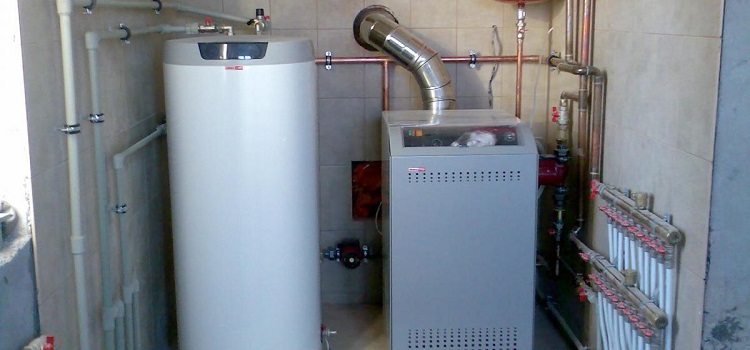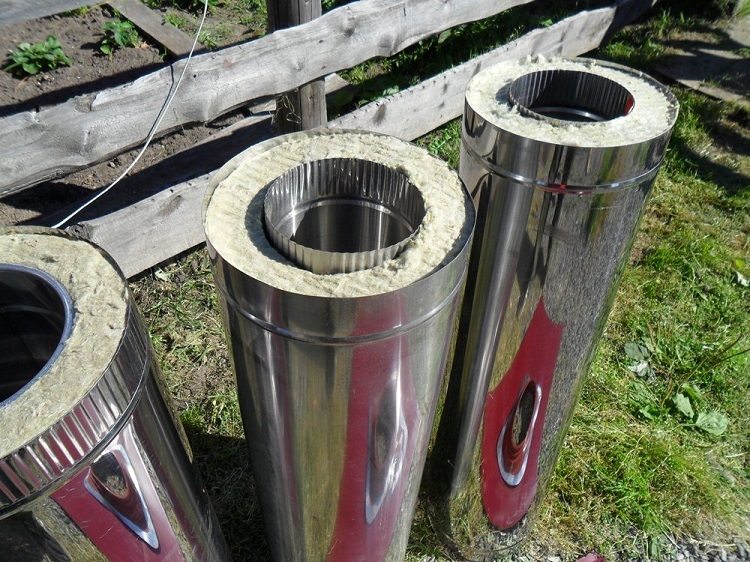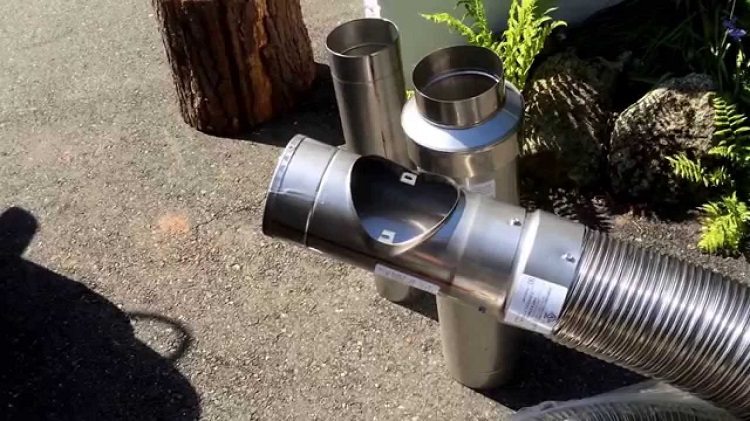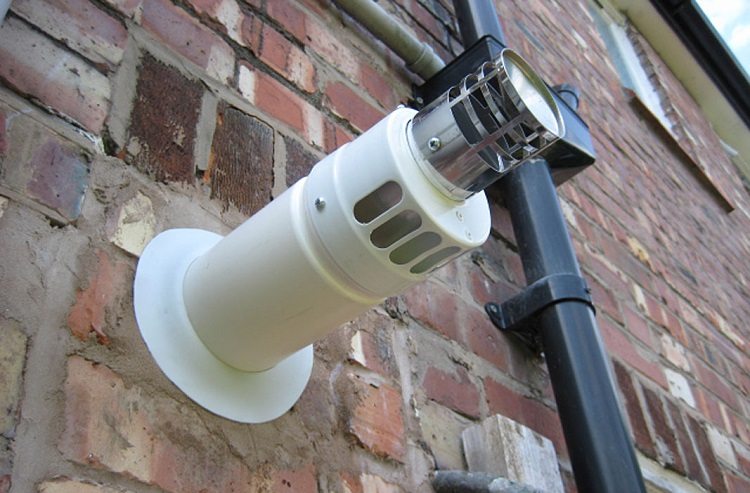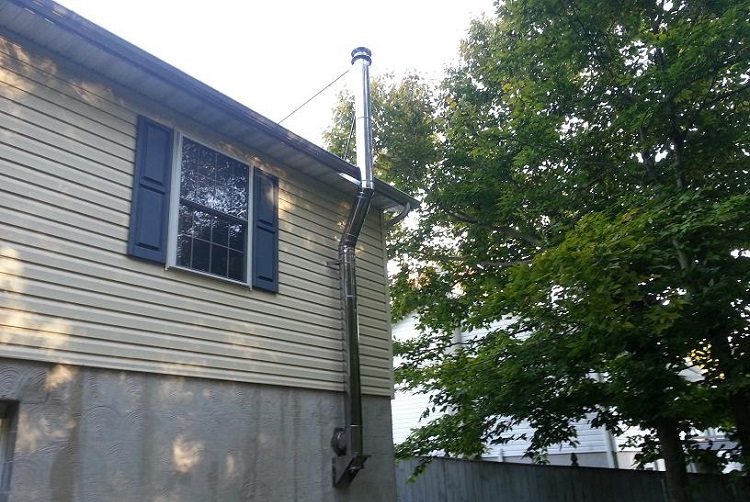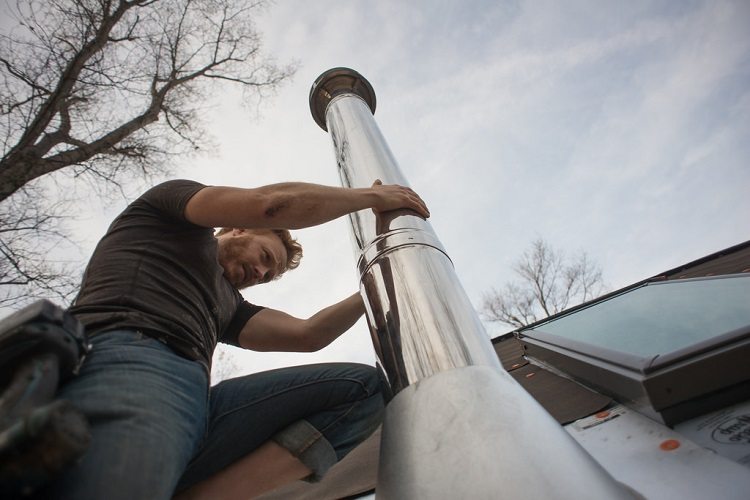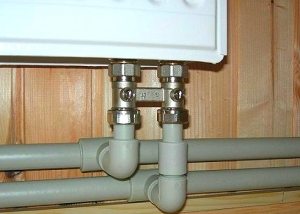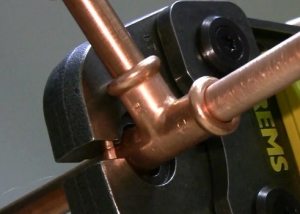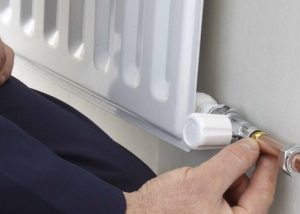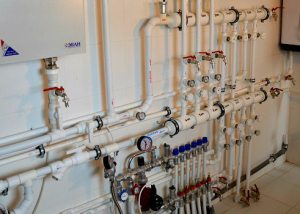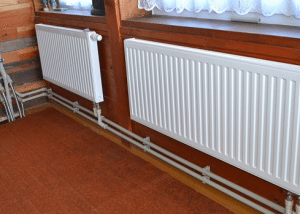Installation of autonomous heating is the most important moment in the improvement of a private house. For heating systems, trunk pipes are useful, with which they are connected to radiators, as well as pipes for removing smoke from the boiler. From the right choice chimneys depends not only on the quality of the heater, but also on the safety of the residents of the house. For different types of boilers, different chimneys are used.
Content
How to choose pipes for heating boilers
The main purpose of the chimney is the removal of fuel combustion products into the open air. Well-chosen pipes for boilers must have the following characteristics:
- the presence of traction. The traction force is affected by the diameter of the pipe for heating boilers. A section that is too small or too large will not have the best effect on the rate of gas outlet from the pipe and, accordingly, on the operation of the boiler;
- resistance to heat. It is permissible to use only heat-resistant materials in equipping a chimney for a solid fuel boiler. The combustion products of gas boilers have lower temperature and acidity than wood, for example, but the resistance of the material of pipes for gas heating to high temperatures is no less important;
- chemical inertness. This rule is especially relevant for the chimney of a solid fuel boiler. When solid fuel is burned, substances are formed that must not react with the materials of which the chimney is made. The condensate contains aggressive chemicals that can eventually spoil the integrity of the chimney;
- the correct form. Pipes having an oval or circular cross section have the best characteristics. Square chimneys are currently used much less frequently, since a large amount of soot and soot settles on their walls. Deposits on the walls of the chimney affect the traction of the boiler.
Important! When choosing pipes, attention must be paid to the integrity of the surface of their walls. They should not have any mechanical damage, scratches or cracks. The walls should be strictly even, without narrowing and expansion in the internal cavity.
Types of pipes for heating boilers
We can distinguish the main types of chimneys. There are several of them.
Brick. Brick pipes have an aesthetic appearance and are also classic examples of chimneys. However, their demand is in decline. Bricklaying requires a lot of time and material costs. A brick pipe is completely unsuitable for a solid fuel boiler for heating. Brick is quite sensitive to toxic smoke arising from the combustion of solid fuel, so its structure is broken over time.
Another significant drawback of brick chimneys is their square shape. Because of this circumstance, chimneys need regular cleaning of soot. To reduce the effect of the acidic environment on the brick structure, the method of using a chimney duct using a cylindrical steel pipe is used.A metal sleeve is placed inside a brick chimney.
Metal. Most often, stainless steel is used as the material in the production. Such pipes are also used for gas heating boilers, and are suitable for a solid fuel heater.
Stainless steel flues need additional insulation. You can purchase factory models of multi-layer chimneys, or make insulation with your own hands. Usually, for this purpose, a design of the type "sandwich": Two pipes of various sizes, the smaller of which serves as a chimney, the larger of a protective sleeve.
Helpful advice! The insulating structure should not be too heavy. Light materials such as basalt wool are used to fill the space between the liner and the chimney.
Ceramic. Smokestacks made of refractory material (high-quality ceramics withstands heating up to 1200 degrees), used for gas boilers and solid fuel heaters. Such chimneys have a double design: the inner pipe is made of ceramic, the outer shell is made of expanded clay concrete or chamotte.
Coaxial. This type of chimneys can be made of various materials: polypropylene, steel, polyphenylene sulfide, ceramics. For a solid fuel boiler, a coaxial chimney is not suitable. Coaxial chimneys are used only for gas boilers with a sealed firebox. Coaxial chimneys differ from other types of pipes by the presence of two structural elements. Through the first, gas is vented to the street, through the second air enters the boiler.
The principles of the device of the heating boiler pipe
Compliance with the recommendations for installing smoke exhaust channels will help ensure good and, most importantly, uninterrupted draft. If the chimney is improperly installed, a decrease in draft is noted, and the boiler will not work at full capacity. The most dangerous consequence if the chimney connection is made with errors is the so-called “traction overturning”, when toxic gases under the influence of wind or high humidity go inside the house, and not on the street. So, the chimney device must meet some requirements.
It is not permitted to connect more than one boiler to the chimney system. The combination of pipes in this case is inefficient: the combustion products will still get inside the building.
The chimney is installed strictly vertically, its height should not be less than 5 meters. Structures with greater height have a stronger traction. Sometimes the chimney device includes sections with a slope of 45 degrees. The maximum allowable slope of the pipe vertically is an indicator of 30 degrees for each linear meter.
Connection of heating boilers to chimneys is carried out by a horizontal pipeline section up to 2 meters long. The slope of the horizontal section cannot be less than 2%. A horizontal pipe should be preceded by a vertical pipe of a length of 1 meter or more. If there is no possibility of mounting a vertical exhaust pipe, as is the case with wall-mounted boilers, then the main chimney is connected using horizontal wiring. The fewer bends there will be in the design of the chimney, the better will be the draft of the boiler.
The installation of the base of the chimney of a solid fuel boiler implies the presence of special inspection hatches that facilitate the process of cleaning the pipe. Some modern models of gas boilers do not require inspection hatches.
Helpful advice! Connection of coaxial flues is permissible in a horizontal plane.Their device involves a certain slope, sufficient to drain condensate into the street. The smoke outlet when using a coaxial chimney should be at a distance of 60 cm from the windows.
The distance between the connecting pipe and the surface of the wall or ceiling is 50 mm or more when finished with fireproof materials. If the wall lining is made of combustible materials, the distance to the pipe increases to 250 mm.
When using stainless steel structures, tees are mounted on a gas pipe in the base of a vertical chimney barrel. Tees with different slopes (87 degrees, 45 degrees) are also used to remove gases and provide maintenance of chimneys. To clean the chimney from soot and ease of repair, tees-revisions equipped with a plug are used. If the chimney has a roof outlet that is common with ventilation pipes, it should be raised well above the common hood.
These principles are taken into account if the connection of the chimney to both the gas and solid fuel boilers is required.
When installing any kind of chimneys, special attention is paid to areas passing through walls or roof ceilings. For these sections, roofing penetrations made of elastic aluminum are used, which also create a sealing effect.
Connecting the chimney system to the boiler: workflow diagram
The internal structure of the chimney design is carried out using the main technological points.
Rules must be strictly observed so that the system functions as it should.
- markings are applied to the floors in accordance with the approved chimney plan. After checking the correct layout, holes are cut out for the exit of the chimney;
- the connection of the nozzle of the gas boiler with the adapter;
- the tee and revision are connected, the main brackets for attaching gas pipes to the wall are installed;
- The chimney pipe is mounted directly. To build height, knees are used;
- pipes are installed on the floors for the passage of a chimney through them;
- other wall fasteners are mounted. The step between the wall clamps is 2 meters, between the brackets - 4 meters;
- the chimney device ends with a special tip, usually made in the shape of a cone. The tip protects the chimney from precipitation;
- the optimal operation of the system is affected by how much the chimney rises above the roof. The height of the chimney pipe above the adjacent part of the roof is at least 50 cm. In the case of a flat roof, a height of 200 cm is taken.
The installation of a heating system for a solid fuel or natural gas-fired boiler initially carries a potential danger. Errors in the installation or selection of chimneys can cause an emergency in the house. If there is no certainty that all calculations of the boiler heating system were made correctly, it makes sense to contact professionals.
